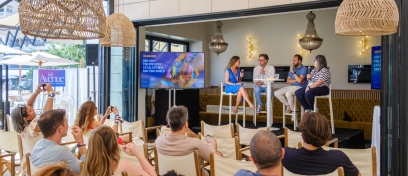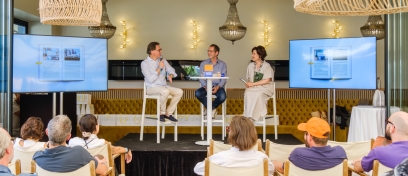For brands
Multisensory Marketing: A Touch of OOH
OOH and the state of alertness
Most would agree that when people are outside or out and about in the city, their senses are on near-full alert. Outside the comfort of one’s home, people are attentive and ready for fast reaction, be it when crossing the street or running into someone they know. Naturally, this means that as consumers, they are also more receptive to brand communications in the urban environment.At the same time, the urban environment can be busy at best and chaotic at worst so standing out is key to high recall. By appealing to more than just sight, multisensory advertising can offer a unique experience and importantly, a strong emotional reaction, which in turn boosts recall, association and consideration. In addition, superadditivity (where the total effect is greater than the sum of individual sensory parts) of multisensory OOH campaigns provide a valuable and unique benefit to brand communication that no other medium offers.
Haptics and commercialism
Technology is driving a revolution within consumer experience and behaviour. Possibilities within translation of data into tactile experiences would overhaul everything from medicine to the way we shop. Experiencing a product with touch before a purchase would finally cross the divide between online and reality and offer tactile feedback of a product, which consumers relish. But there is more to this.Nobel laureate Daniel Kahneman, who many accept as the founder of behavioural economics, argues that ultimately our decisions (including our purchases) are made based on emotion and intuition. Touch is an instinctual action so unsurprisingly it prompts an emotional reaction. In the world of retail, a study at the University of British Columbia has found that touchscreens encourage more impulsive decision making and therefore such campaigns are effective for short-term sales lifts. Furthermore, the results suggest that consumers are more likely to purchase hedonic products through touchscreens e.g. a restaurant voucher instead of a grocery voucher. Therefore, the sense of touch appears to be closely linked to the more pleasurable nature of such hedonic products.
A touch of an inner world
Let’s get back to the basics. Touch is an intuitive action. From day one, it is the fundamental sense that helps humans explore the world around them. It is a sense that guides people when they cannot rely on sight, and it cultivates a feeling of safety within their surroundings, driving their emotional reactions towards their experiences. In many ways, touch is more powerful than sight as it gives a more comprehensive, personal and subjective experience of the world thus heavily influencing memory encoding.A full appreciation of this sense and its integration within communication must be respected, especially when comparing it to the rational information processing of advertising messages. Brands who understand the value of touch can create a personal, emotional experience for consumers and form a bond. Here are some of our favourite executions that transformed brand communication with touch.



